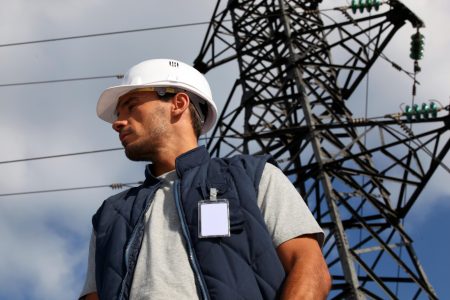Peter Selway, Marketing Manager at Schneider Electric explores the UK defence infrastructure and how electrical resilience can impact the industry
The UK’s defence infrastructure is truly unique, made up of large disparate estates with everything from ports to factories. This creates several management challenges that are compounded by an ever increasing need to reduce costs and become more efficient. Alongside the MoD’s commitment to becoming carbon neutral by 2050 (NZ50), the next few years will also see a shift toward resilience and robustness as the nation looks to protect itself against both seen and foreseen threats.
No industries will be greater impacted than those critical to safe and healthy society – namely; healthcare, defence, grids and data storage facilities. In these sectors, where the stakes are highest, resilience is no longer important, it is critical.
We all understand the inconvenience of outages at home, whether it’s the internet cutting out or a fuse going, turning off the lights. However, for critical applications outages lead to lost revenue, bad service, and in some scenarios, loss of life. The UK defence industry needs a smart, reliable and efficient power distribution system, which can proactively mitigate and prevent all potential risks.
To create a sufficiently robust architecture, we must first understand the immovable foundations upon which it must sit.
Factoring simplicity into infrastructure
The growing complexity of digital technology and electrical systems adds to potential risks. As well as the struggle in managing such an infrastructure, the danger of outages, shocks and fires increases due to incorrectly installed appliances. The current scale and nature of the MoD’s electrical infrastructure make its management a unique challenge, both from a safety and efficiency perspective.
One key issue is ensuring all smart components with a distribution board are connected. Modern connected tools can help automatically detect all smart devices contained within a panel, whether they are working together and how any additions could affect the installation. Incompatibility is also a major issue causing potentially disastrous circuit issues. Managers must opt for applications that enable electricians to save their progress digitally, to ensure their work can be accessed and understood at any point after installation.
Prevention better than a cure
When it comes to outages, attention is generally, and understandably, focused on the rules and procedures once the issue has arisen. Clearly, an outage that has or is taking place is far more visible than those yet too and will likely draw more attention from external parties.
However, in critical applications, being reactionary is simply not an option. Outages at a defence base have wide-ranging, even life-critical, implications. It’s not enough to have a response plan – there must be a comprehensive strategy that utilises the latest technologies for preventative detection and proactive response.
The only means to shutdown risk, minimise damage and optimise output is to integrate passive and active protection prevention technology and develop a prevent first culture. New technology has been introduced which not only acts as a barrier to electrical issues, but also helps to prevent causes from originating, through trip status and real-time measurement updates.
Culture also plays a crucial role. Developing and auditing electrical safe work practices policy, conducting a risk assessment and safety training, and strategies for mitigation is crucial and cannot be overlooked.
Predictive maintenance
Due to their impact, outages are frequently thought to be the symptoms of large-scale technical issues, such as power generation failure or unforeseen peaks in demand. In reality, most are caused by existing equipment performing at a sub-standard level.
Many components become increasingly prone to breaking and failing, resulting in the gradual decline of an estate’s efficiency. Indeed, budget reductions force building owners to manage building systems with fewer resources, an issue which is further exacerbated by older systems becoming inefficient over time. Even with the budget, maintenance is time consuming, difficult and can be demoralising for staff. These maintenance issues combined with the cost of downtime, points toward a new predictive approach.
Smart connected digital devices enable managers to have insight into the earth leakages, predict maintenance timeframes, and help prevent any issues before they arise. These devices have become responsible for controlling more than a single mechanism. They now measure and collect data and provide control functions. Furthermore, they enable facility and maintenance personal to proactively see faults before they occur and minimise outages.
Within a power network, intelligence is embedded inside equipment, such as the trip units of circuit breakers. These smart breakers can provide power and energy data, as well as information on performance, including alarms and alerts. Hardware has evolved to include new digital capabilities, including communicating and sharing with the building analytics software to build greater intelligence and make predictive maintenance a reality.
Enhancing capacity
While network capacity is frequently referenced as a productivity and energy efficiency perceptive, it plays a vital role in mitigating downtime. As discussed, the complexity of systems can lead to increased electrical risks. To mitigate these risks, managers need the technology to accurately identify energy use and avoid power demand failures.
In a spralling and critical environment like defence, managers must have complete visibility into network performance and have the ability and tools to continually optimise. Doing so will not only improve performance and reduce costs, but it will help prevent the overstressing of the network which will lead to degradation and, over time, outages.
Vital to successful visibility is the integration of building software. Only by bringing together all and simplifying power systems can energy usage and electrical network health be monitored, whilst power quality information is analysed. Ultimately, the more holistic and granular the data that can be pulled, the better the decision-making process that can safeguard assets, maximise operational efficiency, ensure business continuity and maintain regulatory compliance.
Outages aren’t inevitable
Underlying all the other fundamentals principles of fighting outages is connectivity. In a modern infrastructure, all systems and solutions must be easily monitored and controlled from a single digital application.
Load levels, leakage, energy consumption, power quality, warnings, alarms and notifications on events, stand as the backbone of any effective strategy. Innovative solutions ensure effective communication between a system and enable root cause investigation and power restoration action to be taken before damage can be done.
Outages are never an inevitability. In critical applications such as defence bases, the right approach combined with the best tools, any challenge can be met before they have the chance to begin. From a technology standpoint, the key remains the Introduction of digitally connected technology that enables managers to predict maintenance needs, optimise network capacity and ultimately avoid electrical overloads. On the ground, managers need to employ a culture of openness – any issue is a chance to learn, develop and improve. By implementing a culture of advancement, outages can be stopped before they take place. Not only will this create a more resilient and productive environment, it will go a huge way to helping the MoD efficiently meet its commitment of carbon neutrality by 2050.
Why sustainable development is important to defence
The GOV.UK states, “Global environmental, social and economic pressures pose real threats to defence’s ability to meet its strategic objectives. For example, climate change, natural resource depletion, water scarcity, and energy and resource scarcity are all potential catalysts for increased unrest or armed conflict. These challenges will also present fresh demands on our people, infrastructure and equipment.
“Embracing sustainable development will ensure that defence is prepared for these challenges (adaptation) and that we play our part in reducing the severity of any environmental, social or economic threats to defence capability in the first place (mitigation). Other important benefits of sustainable development to defence include:
- less reliance on fossil fuel in-theatre will reduce the amount of fuel that has to be transported to the front line; a costly, risky and logistically resource intensive activity that can undermine operational continuity
- considering issues such as the effects of climate change and resource availability in our equipment, infrastructure, training and policy planning, and adjusting and adapting our behaviour now, will cost less than trying to adapt in the future
- using fewer natural resources, less energy, fuel and water and producing less waste will save money across defence, especially if we take a through-life value for money approach to investments in equipment and infrastructure
- acting more sustainably has the potential to increase support for defence which could generate more favourable conditions in which to conduct our UK business, as well as potentially contribute to the success of military operations, and aid recruitment and retention
- giving appropriate consideration to the impacts of defence decisions on the UK economy could contribute to the maintenance of a healthy UK industry in the defence and security sectors as a source of innovation and supply, and for the wider economic benefits this brings in terms of providing jobs and maintaining skills.”
To stay up to date on the latest, trends, innovations, people news and company updates within the global security market please register to receive our newsletter here.
Media contact
Rebecca Morpeth Spayne,
Editor, Security Portfolio
Tel: +44 (0) 1622 823 922
Email: editor@securitynewsdesk.com













